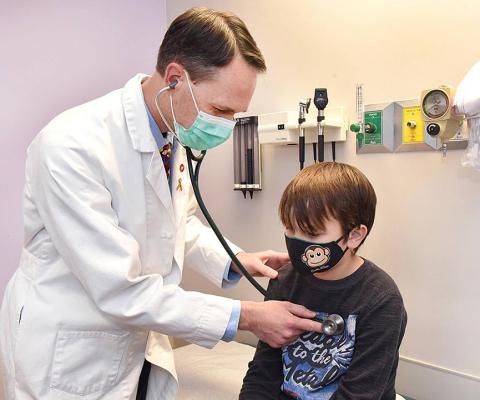Drug Combination Shows Promise for Children with APL

Photo: Patrick Deavours - Children’s of Alabama
A clinical trial has found the combination of all-trans retinoic acid, which is a metabolite of vitamin A, and arsenic trioxide is highly effective in children with standard- and high-risk acute promyelocytic leukemia, or APL. Nearly all patients in the trial survived for 2 years without experiencing a relapse.
None of the children with standard-risk APL required conventional chemotherapy, and those with high-risk APL received just four doses of the chemotherapy drug idarubicin (Idamycin PFS). Results of the NCI-funded trial, conducted by the Children’s Oncology Group, were published in JAMA Oncology.
“This is a remarkable achievement and will be the new standard of care,” said NCI’s Dr. Malcolm A. Smith. “Twenty years ago, these patients would have been treated with intensive chemotherapy, including drugs that lead to heart problems later in life. By comparison, all-trans retinoic acid and arsenic trioxide have fewer acute or long-term side effects.”
APL accounts for 5 to 10 percent of acute myeloid leukemia diagnoses in children and adolescents. Symptoms of this blood and bone marrow cancer include excessive bleeding, easy bruising, low red blood cell count, fever and fatigue.
In this trial, 154 children between ages 1 and 22 who were newly diagnosed with APL were given oral all-trans retinoic acid, along with intravenous arsenic trioxide, daily for at least 28 days.
The children with standard- and high-risk APL had 2-year overall survival rates of 99 percent and 100 percent, respectively. One child with standard-risk APL died early in treatment, and 3 children experienced a relapse.
Less than 10 percent of the children experienced severe side effects, which included increased blood sugar, liver irritation and bleeding.
“Arsenic is often associated with being a poison, but it can also be a powerful medicine,” said Dr. Matthew Kutny of Children’s of Alabama and the University of Alabama at Birmingham, the study’s lead investigator. “Arsenic trioxide has been used in traditional Chinese medicine for millennia. The difference between a medication and a poison is really the dose. Over time, we have figured out the exact dosing that would be effective in killing these types of leukemia cells without damaging other healthy tissues.”
Without the need for maintenance therapy, treatment time was reduced from more than 2 years to about 9 months. More follow-up will be needed to determine the long-term effects of this treatment in children.
